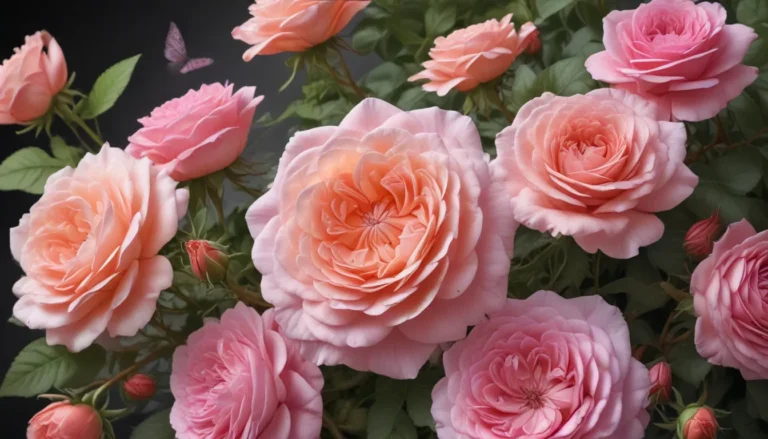The pictures we use in our articles might not show exactly what the words say. We choose these pictures to make you interested in reading more. The pictures work together with the words but don’t take their place. The words still tell you the important facts.
Welcome to the captivating world of morning glory, a plant renowned for its vibrant flowers and unique growth habits. From its symbolic significance to its fast growth rate, morning glory has captured the attention and admiration of gardeners, botanists, and nature enthusiasts worldwide. In this article, we will delve into seventeen captivating facts about morning glory that will deepen your appreciation for this remarkable plant. Join us as we uncover the wonders that make morning glory such an intriguing and beloved addition to any garden or landscape.
The Enchanting Morning Glory Plant: A Closer Look
- Morning glory, a member of the Convolvulaceae family, boasts vibrant colors and fast growth, making it a captivating addition to any garden or landscape.
- With its symbolic significance, pollinator attraction, and easy propagation, morning glory brings beauty, hope, and joy to people around the world.
Morning Glory: A Plant of Many Colors
Did you know that morning glory is a member of the Convolvulaceae family, which consists of over 1,000 different species? The scientific name for morning glory is Ipomoea, derived from the Greek words "ips" (meaning worm) and "homoios" (meaning resembling), referring to its twining habit. One of the most enchanting aspects of morning glory is its wide array of flower colors, ranging from vibrant purples and pinks to soothing blues and whites.
The Growth Habits of Morning Glory
Unlike perennial plants, morning glory is considered an annual vine, completing its life cycle within a single growing season. With the right conditions, morning glory vines can reach heights of up to 10 feet, making them ideal for adding vertical interest to gardens. The flowers of morning glory open in the morning and close in the afternoon, adding a unique touch to their beauty. Known for its fast growth rate, morning glory quickly fills in empty spaces, providing a lush, green backdrop for gardens and landscapes.
Origins and Cultural Significance of Morning Glory
While morning glory is now cultivated worldwide, it is native to tropical and subtropical regions. Morning glory flowers are regarded as a symbol of the arrival of summer in many cultures, representing the joy and vibrancy of the season. The nectar-rich flowers attract pollinators such as bees, butterflies, and hummingbirds, creating a welcoming habitat for these beneficial creatures.
Medicinal Uses and Symbolism of Morning Glory
In traditional medicine, morning glory has been used for various purposes, including treating constipation, respiratory issues, and promoting relaxation as a mild sedative. Certain varieties of morning glory, such as Ipomoea tricolor, contain psychoactive compounds that can induce hallucinogenic effects. This plant holds cultural significance in countries like Japan and China, symbolizing love, renewal of life, and autumn's arrival.
Growing and Caring for Morning Glory Plants
Morning glory is easy to propagate from cuttings, making it simple to multiply your plants. Once established, morning glory can self-seed and spread easily, creating beautiful displays of new growth year after year. These plants are also a symbol of hope, optimism, and new beginnings, reminding us to approach each day with a positive outlook.
Conclusion: Embrace the Beauty of Morning Glory
Morning glory plants offer endless fascination and enjoyment for both seasoned gardeners and novice plant lovers alike. With their ability to attract beneficial pollinators and their versatility as climbers, morning glory is a valuable addition to any garden. Consider adding morning glory to your outdoor space and experience firsthand the captivating beauty and charm that these plants bring.
FAQs About Morning Glory Plants
- What are the different types of Morning Glory plants?
- Do Morning Glory plants only bloom in the morning?
- How do I care for Morning Glory plants?
- Can Morning Glory plants be grown in containers?
- Are Morning Glory plants invasive?
Our commitment to delivering trustworthy and engaging content ensures that each fact shared is accurate and reliable. Trust in our dedication to quality and authenticity as you explore the captivating world of morning glory with us.






